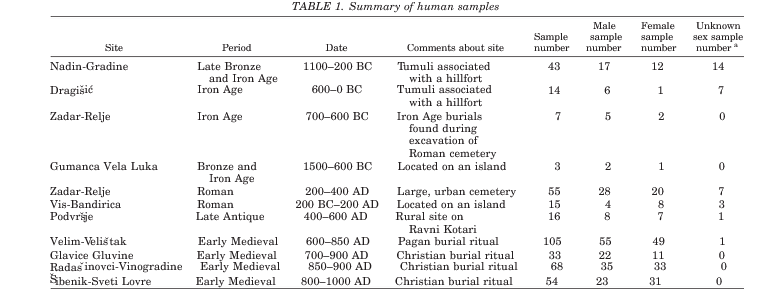Certainly true Angela.
Even I deserved bans at times, and rightfully got them more often then not.. Precisely for disagreements with some Greek members early on after I registered, before I became a veteran of these troll games. Was mostly an observer before and saw no point in posting, mainly hit eupedia researching history and genetics.
Thing is it would be hard to say anyone is unbiased, even you. Mods on this forum have been far more cordial with Greek tolls than Albanian ones. As far as I am concerned the ban hammer should be equally heavy.
Nik and Laberia got perma banned cause of Parapolitikos bullsh*t and toll baits and provocations. Yet, as I mentioned couple of posts up, his thread is the only active post on Albanians, cause again Greek tolls are tolerated, meanwhile the Who are the Albanians thread got closed cause of different genetic projects taking their grievances out in public.
People saying 1/10th of what has been said about Albanians/ and representative haplogroups, about Italians or Greeks would immediately get flamed out of this forum. I have seen so myself, especially when some dubious accounts with western flags would comment on south Italians being MENAs.
Well, I'm glad we've gotten down to the core of the issue. Claiming that Albanians are descendants of Ottomans is t-rolling behavior, as I pointed out more than once. In fact, if my memory serves I had running disputes with Serbians, I think it was, and pointed out, again more than once, that the Albanians had been in the Balkans far longer than any Slavs, who were late comers.
However, disagreeing with Albanians on certain topics, or finding that the Greek members, when there are any, have some valid points, is not t-rolling Albanians. Certain Italians and Italian Americans started their own site in response to t-rolling behavior. I never joined or read it beyond a few initial visits, because first, they did more than their own fair share of t-rolling, and secondly, they refused to accept certain facts which the genetics made clear.
I've never done either. I try to be as objective as is humanly possible. If I agree with certain things Greek members have said (by no means all), then it is because I believe the science is on their side on certain matters; it has absolutely nothing to do with any bias for them as a group or against Albanians, although to be completely honest, given how Albanian members have spoken to and about me, both here and even worse, in PMs, it required an effort of will to refuse to let that affect my decisions.
When someone disagrees with the "Albanian" point of view, it isn't necessarily out of any animus, or t-rolling. It can be an honest expression of how someone interprets the data, and even more so, at least in my case, a belief that the data is "not" in, and that people are just speculating to an incredible degree. Now, sometimes, when you speculate, you turn out to be right, sometimes you don't. It doesn't really change the fact that you didn't have enough evidence when you came to your conclusion.
As to the constant song about how much MENA there is in Southern Italians, the discussions are so a-scientific as to be laughable in most cases. Using that outmoded terminology for the sake of the argument, I couldn't give a rat's you know what if it were 90% of the genetic material. People persist in thinking that their own prejudices, biases, call them what you will, are universal. They're not. Believe me, both my husband, who is actually Southern Italian, and I, who married him, would be a lot more concerned if his ancestry consisted of large percentages of other ethnicities, and I mean European ones. My problem with the people on sites like anthrogenica is that they're ignorant as well as biased. Just look at what they promoted for YEARS about the Etruscans. You think I would have cared personally if it turned out that they came to Italy from Anatolia in the first millennium B.C.? If you do you haven't read many of my posts and you don't know me. The fact was that the archaeology and the history and what little ancient dna we had (mtDna) was all against that conclusion. So, who was wrong and who was right? Anyone remember the prediction that the Mycenaeans were going to be blonde haired, blue eyed virtual identical copies of Corded Ware? How about all that "modeling" showing those huge percentages of steppe all over northern India? Did any of all that incredibly bad analysis, and the examples are too numerous to mention, teach certain people some humility? No, it absolutely didn't.
In fact, my track record all round is infinitely better than that of the members on that site and than the likes of someone like Eurogenes. That's because I don't let ascertainment bias influence me, and instead read everything available and then judge as best and as objectively as possible where the answer might lie. If I don't have enough data, I say so. I spent my entire professional life dealing with issues that way, and I wasn't going to change that when the topic was population genetics.




